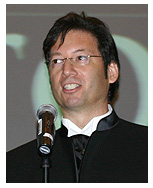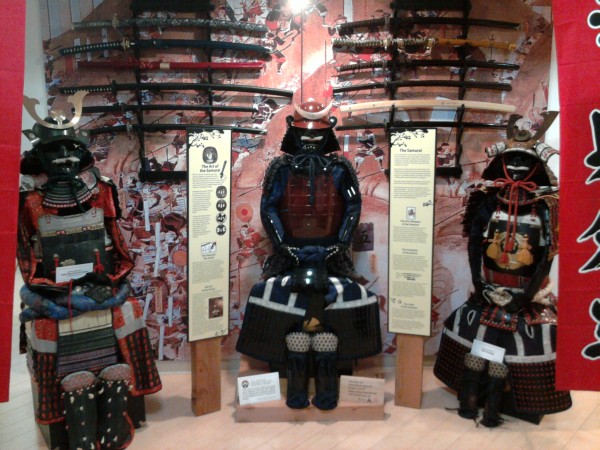APA Spotlight is a weekly interview of Asian Pacific Islander Americans (APIA) community leaders. It is a spotlight on individuals who have dedicated their careers to issues surrounding the APIA community with the goal of bringing much deserved recognition to their work and cause(s).
 Michael Matsuda is founder and president of the Martial Arts History Museum, an Asian cultural museum focusing on Asian art, tradition and history in connection with Asian forms of martial arts. Founded in 1999, it is a non-profit organization and first of its kind in the world.
Michael Matsuda is founder and president of the Martial Arts History Museum, an Asian cultural museum focusing on Asian art, tradition and history in connection with Asian forms of martial arts. Founded in 1999, it is a non-profit organization and first of its kind in the world.
Michael is recognized as a nationally respected historian of Asian martial arts in America. He was founder and publisher of Martial Art Magazine and contributing editor for numerous publications for the last 20 years. An author of four books on the martial arts, he was inducted into the Hall of Fame in 2004. His career encompasses his role as production head for a variety of magazines as well as manager of the media department for Blue Cross of California and California Federal Bank producing their commercials and media programs.
He is a 10th degree black belt in the art of Monkey style kung fu and 6th descendent of the art. He has been practicing the martial arts for nearly 45 years and continues to teach in Santa Clarita, CA. He conducts a variety of seminars on the monkey art as well as providing lectures on the museum at a variety of Asian festivals and conventions.
Michael holds a bachelor’s degree from the Master’s College in Santa Clarita, CA, associate degree in journalism and certificate in graphic design and illustration. He attended the American Film Institute for three years and taken extensive courses in marketing and business.
What is the mission statement of your life?
I think everyone has a mission in life. Sometimes we know what it is in our youth, sometimes it takes decades to decide what mission do we want to fulfill in life. I feel this is a very hard concept for most people and as my friends get older, they still struggle feeling out their future. Is our mission our work, is it our accomplishments, it is becoming rich or a movie star? I also don’t believe that mission statements are limited to just one thing and can change along the way. For me, my mission is to open the doors of understanding by creating a museum dedicated to Asian history, art, culture and tradition. There is so much we don’t know about each other and a museum like this creates a common denominator that everyone can relate to. Secondly, my mission statement is to enjoy my family and my God and in the end, that’s what matters the most.
How did you end up doing what you’re doing?
I took a number of paths throughout my life and as I look back, I can see that they all connected to establishing the museum. Although a martial arts practitioner since the 1960s, it wasn’t until I received a degree in journalism that I started writing for the arts and became a contributing editor for the major martial arts magazines. As I continued my college education into marketing and business, I decided to open my own magazine, Martial Art Magazine. It was my goal to focus on martial arts history in the magazine but because of the market at the time, tournaments were the most popular events and history took a back seat. I sold the magazine after four years and began writing books on martial arts history. After 25 years in college including three years at the American Film Institute, I felt that the best path for accomplishing my goal was to create a museum dedicated to Asian forms of martial arts. In 1999, I established the Martial Arts History Museum. It took 12 years to reach my goal and it was a very bumpy ride. However, I never doubted. I always knew one day the museum would become reality and it did.
If Hollywood made a movie about your life, whom would you like to see play the lead role as you?
Shin Koyomada. He’s a very nice person and I would like to be played as a full Japanese.
How can people find out more about your organization or get involved?
They can visit the Martial Arts History Museum at 2319 W. Magnolia Blvd., Burbank, CA 91506 or visit our website at www.martialartsmuseum.com.

If you had a crystal ball, what do you see for the future of the Asian Pacific Islander American community?
I see a bigger involvement in volunteering which will lead to a bigger involvement in politics. It’s important that we have good representation. We already have some amazing people as senators, congresspersons and more. But as I look toward the future of the APIA community, I see greater things for us. We cannot dismiss the important role politics has on the community and we need individuals in office, that have a vision for the community.
Bonus Question: What advice do you have for young Asian Pacific Islander American professionals?
Never give up! No matter what obstacles come your way, no matter how many people give up on you, don’t give up on yourself. Never give up! If you have a dream, a goal and what you feel you are called for, set your mind, your soul toward that goal and don’t give up! It may not come overnight and it may take longer than you anticipated, but don’t give up! I never doubted for one moment that the museum would open. It took 12 years but I knew from day one that it would happen. I encountered door slams in my face from councilman, laughed at by the office of the mayor, and completely ignored by my own martial arts community, but I knew if I kept pushing, kept believing, it would happen.
Your future is in your hands. As APIA professionals or any non-majority professionals, each of us will face obstacles, but how you overcome them will help define who you are. I know that sounds like a generic phrase, but your attitude after a struggle will have an effect on you and on how you more forward. The road ahead is not always an easy path, and for some of us, it is even a harder path, but you should never give up.
Bonus Question: What are your comfort foods and what memories do you have associated with them?
My father and I used to go to the Dodger game every Friday night. We would get the same seats, the wheelchair seats in the reserve section, right behind home plate, every time. We really loved the Dodgers. On the way we would pick up a hotdog at Costco’s store. When they replaced the grill hotdogs for steamed ones at the stadium, we started buying them at Costco. By the second inning, we would pull out our hotdogs, put on lots of mustard and enjoyed the game. It was the greatest time in the world for me. It was our time and we loved it. Sadly, my father passed away close to two years ago and I haven’t been back to Dodger stadium since. But whenever I have a Costco hotdog, I think of the fond memories of me and my father at a Dodger game.
Bonus Question: What’s your guilty pleasure?
I am completely hooked on Nickelodeon TV and can’t get enough of iCarly and Avatar: The Last Airbender. When my wife comes home I have to turn it because she can’t stand them. I guess that’s my guilty pleasure.
Know someone we should highlight on 8Questions? Send an email with their name and contact info or website.
- Excited
- Fascinated
- Amused
- Disgusted
- Sad
- Angry








